THE RED FLAG OF REVOLUTION
IN FRANCE |
|
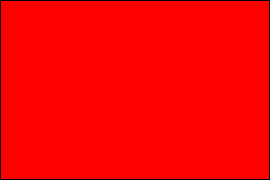
The Red Flag of
the Paris Commune |
The red
flag became a standard feature of the series of revolutions that
France experienced between 1789 and 1871. During the Reign of
Terror (1793-94), the Jacobins adopted the red flag as an
alternate national flag, though it was never formally
confirmed and the
Tricolor remained the official national flag of France. But
the red flag's association with revolution had been established,
and it reappeared during the Revolution of 1830 and again
during the Revolution of 1848, when it nearly replaced the
Tricolor. It was the disastrous (for France) Franco-Prussian War
and the Paris Commune, however, that cemented the red flag's
connection with revolutionary socialism. The Commune was
composed mostly of radical republicans, Marxist socialists and
anarchists. It took power in Paris after the city's surrender to
the Prussian Army and immediately adopted a revolutionary
program. The Commune soon clashed with the
provisional government of France and a
violent civil war ensued, with horrifying atrocities on both
sides before the insurrection was finally put down. This was a
landmark moment in the history of the Left and after the
Commune's bloody suppression, socialists around the world
adopted the red flag.
|
THE RED FLAGS
OF THE RUSSIAN REVOLUTION |
|
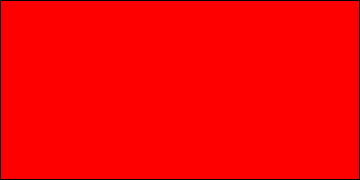
Provisional National Flag of the
Russian
Soviet Federated Socialist Republic |
|
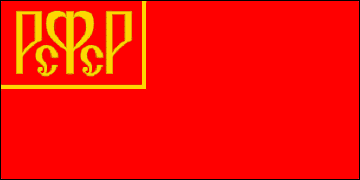 |
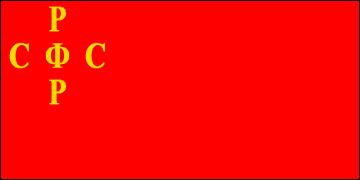 |
|
National Flags
of the Russian Soviet Federated
Socialist Republic
From the beginning
of the Russian Revolution in 1917, the red banner played a
prominent symbolic role. When the sailors of the Baltic Fleet
revolted, they hoisted a
plain red ensign. Following the
Bolshevik coup in October 1918 this ensign was adopted, with a
conscious nod to the traditions of the Paris Commune, as the de
facto national flag of revolutionary Russia. Upon the formal
establishment of the Russian Soviet Federated Socialist Republic
(RFSFR) the initials of the state, in golden yellow Cyrillic
characters, were added and this flag, of which there were
several variants, was officially confirmed. The early red flags
of the other socialist states that would constitute the
Union
of Soviet Socialist Republics (USSR) mostly followed this
pattern.
|
THE SPANISH CIVIL
WAR
|
|
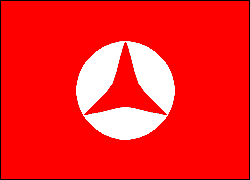
Popular Front |
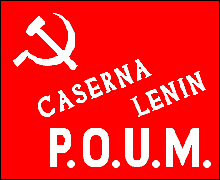
P.O.U.M
• Lenin Barracks |
Though the national
flag of the
Spanish
Republic was a tricolor consisting of horizontal red,
yellow and purple stripes, many of the political flags on the
Republican side of the Spanish Civil War (1936-39) were red.
Among these were the flags of the Popular Front and the Workers'
Party of Marxist Unification (Partido
Obrero de Unificación Marxista or P.O.U.M.). The
Popular Front, a coalition of left-wing political parties,
formed the Spanish Republican government and sponsored the
International Brigades, who adopted the three-pointed star as
their insignia. The P.O.U.M., an anti-Stalinist communist party,
was initially part of the Popular Front. The flag shown above
flew over the Lenin Barracks in Barcelona at the time of George
Orwell's enlistment in the P.O.U.M. militia. Orwell's service in
Spain, during which he witnessed the Soviet-supported Spanish
Communist Party's vicious purge of P.O.U.M. and other
anti-Stalinist groups, played a major role in the development of
his political thought.
|
THE PEOPLE'S
REPUBLICS OF EUROPE |
|
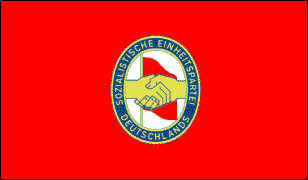
Socialist Unity
Party •
German Democratic Republic |

United Workers'
Party • Polish People's Republic |
|
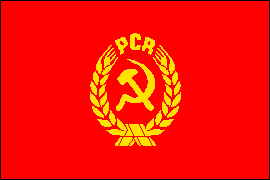
Communist Party • Socialist
Republic of Romania |
After the Second
World War, communist regimes were established in most nations of
eastern and central Europe. The People's Republics, as these
states were collectively known, retained their former national
flags, usually with the communist-style state coat of arms
added. The red banner was not disregarded, however. Plain red
flags were often flown in conjunction with the national flag,
particularly on holidays like May Day, revolutionary
anniversaries, etc. With various symbols added, the red banner
also served as a party flag, the flag of party organizations,
etc. An example is the flag of the Socialist Unity Party of the
German Democratic Republic (Sozialistische Einheitspartei
Deutschlands or SED), which displayed the party badge on a
field of red. The clasped hands symbolized the merger of the
German Communist Party with the German Social Democratic
Party—actually a forced merger in the Soviet zone of occupation
only that led to the suppression of all other political parties.
Note that the red banner appears as a backdrop for the clasped
hands. In Poland, the United Workers' Party (actually a front
for the Communist Party) maintained the tradition of the plain
red banner.
|
THE EAST IS RED |
|
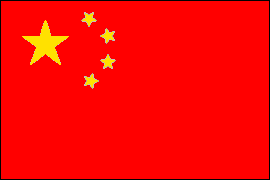
National
Flag of the People's Republic of China |
|
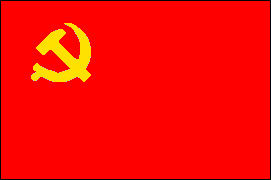
Chinese Communist Party |
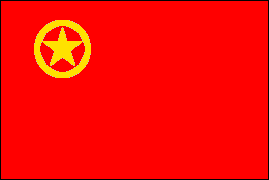
Chinese Communist Party
Youth League |
|
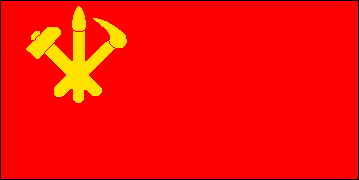
Korean Workers Party •
People's Democratic Republic of Korea |
|
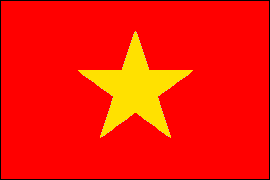
National Flag of the
Socialist Republic of
Vietnam |
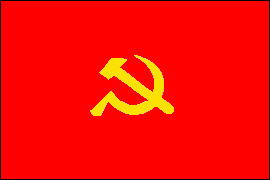
Vietnamese Communist Party |
The color red has
long been associated with the Han, China's dominant ethnic
group. Thus the red field of the flag adopted in 1949 by the
People's Republic of China symbolizes both the Chinese nation
and the socialist character of the state. The large yellow star
and four smaller stars symbolizes the Communist party's
leadership of Chinese society's four classes. The flag of the
Chinese Communist Party replaces the stars with a hammer and
sickle and that of the Youth League displays a star within a
ring. The national flag of the Korean Democratic Socialist
Republic (North Korea) is red, white and blue, but the flag of
the Korean Communist Party is a red banner with symbols of
industry, intellectual work and agriculture (hammer, artist's
brush and hoe) in the canton. Vietnam's national flag follows
the Chinese example, and the flag of the Vietnamese Communist Party
is similar to that of many other national communist
parties: red with the hammer and sickle in golden yellow.
|
THE RED BANNER
TODAY |
|
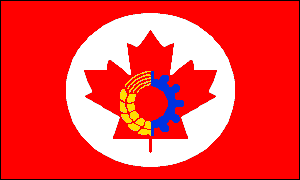
Canadian Communist Party |
|
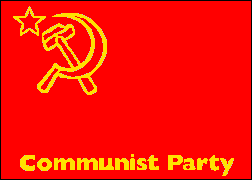
Communist Party of Great Britain |
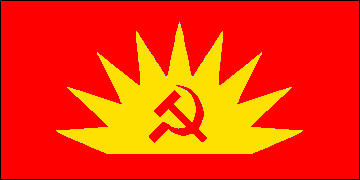
Irish Communist Party |
|
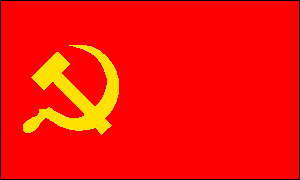
German Communist
Party |
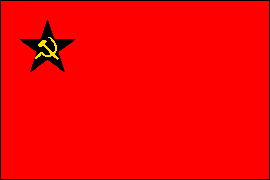
South African
Communist Party |
|
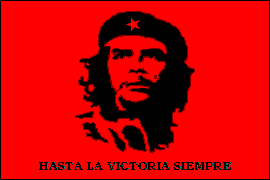
Che Guevara Flag
|
Today the
red banner maintains its status as a symbol of revolution.
Communist and socialist parties around the world use it, either
plain or with added symbols. In 2011, the red banner waved over
the Occupy Wall Street protests in New York City and around the
United States. One variant popular with many progressive and
leftist groups displays the visage of Che Guevara, the romantic
hero of the Cuban Revolution. Flags of this type have been used
by various left-wing insurgent groups in Central and South
America. The Spanish motto reads: "Onward to Victory."
|



















